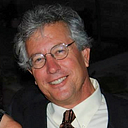SAQs for APUSH Topic 8.4 — The Economy After World War II
3 min readMar 31, 2021
Ten questions designed to help students review for the annual exam and that relate to the period of time when factories that had once made bombs now made toasters, and toaster sales were rising.
- After 1945, a burgeoning private sector helped spur economic growth. What does the term “burgeoning private sector” mean.
- After 1945, federal spending helped spur economic growth. Evidence in support of this claim includes the federal spending associated with the defense industry during the Cold War, the federal spending associated with the Space Race, and the federal spending that resulted from the GI Bill. The G.I. Bill was a law that provided a range of benefits for returning World War II veterans, these benefits all paid for by the federal government. Name two of the more costly and note-worthy “benefits” that veterans received as a result of the G.I Bill.
- After 1945, the baby boom helped spur economic growth. What was the baby boom? What did the parents of the baby boom generation do that helped spur economic growth?
- After 1945, technological developments helped spur economic growth. Name and briefly describe one technological development that helped spur economic growth after 1945.
- After 1945, the labor force became more diverse as there was an increase in immigration from Latin America and Asia after the passage of new immigration laws in 1965. Evidence in support of this claim is something called the Immigration and Nationality Act 1965. Click here for ten questions related to this post-World War II law of Congress that resulted in a significant altering of the ethnic makeup of the U.S.
- After 1945, the labor force became more diverse as internal migrants sought access to the post-war economic boom. Evidence in support of this claim is something called the Second Great Migration. Describe.
- After 1945, the labor force became more diverse as the number of working women increased, despite the fact that the image of the traditional nuclear family dominated popular perceptions in the postwar era. What World War II poster comes to mind when thinking about women in the workforce?
- After 1945, United States policymakers engaged in a Cold War with the authoritarian Soviet Union, seeking to limit the growth of Communist military power and ideological influence, create a free-market global economy and build an international security system. What’s meant by the term “free-market global economy?”
- The economic changes that took place after World War II resulted in a culture that many young people rejected in the 1960s. Name and describe one economic value of the post-world World War II generation that the young people of the 1960s counter-culture generation rejected. Click here for ten questions designed to help students review for the annual exam and that relate to the values, practices, traditions, and beliefs of the young people living at the time of the most tumultuous and divisive decade in world history, one marked by the civil rights movement, the Vietnam War and antiwar protests, political assassinations, the first man on the moon, and an emerging “generation gap.”
- The economic changes that took place after World War II significantly affected the Sunbelt region of America. Click here for ten questions that relate to a post-World War II migration to this region and that resulted in the Sunbelt emerging as a significant political and economic force.
- As the economy boomed in the years after World War II, critics began to question the burgeoning use of natural resources. Responding to the abuse of natural resources and the alarming environmental problems, activists and legislators began to call for conservation measures and a fight against pollution. The roots of this post-World War II environmental movement can be traced back to Murray Bookchin’s Our Synthetic Environment, Paul R. Ehrlich’s The Population Bomb, and Rachel Carson’s Silent Spring. Carson’s book documents the adverse environmental effects caused by what?
